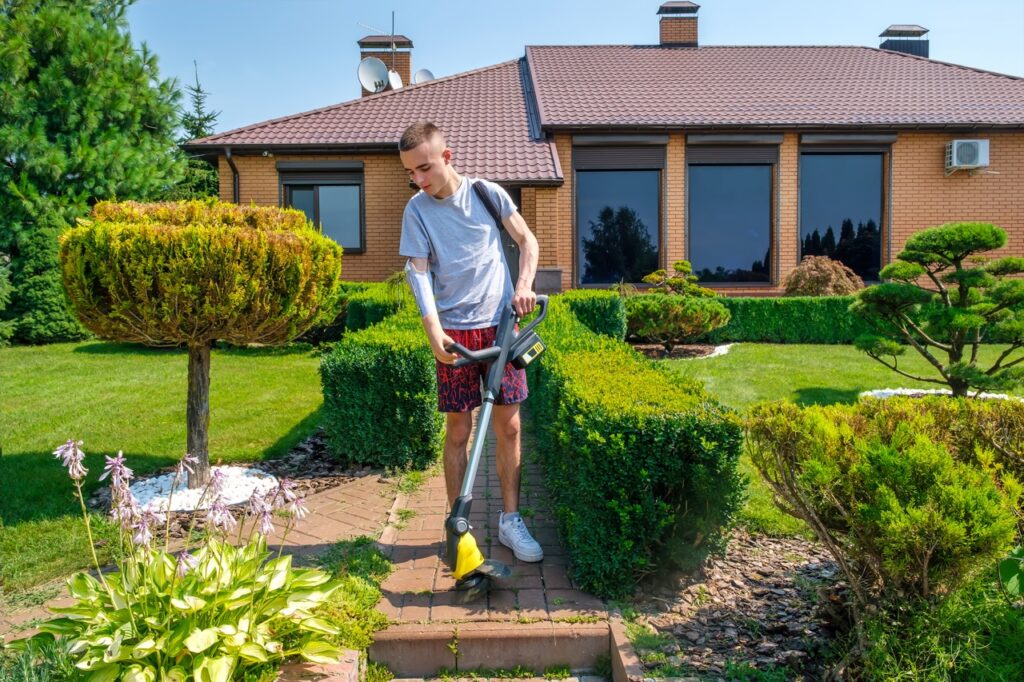Controlling weeds can be a never-ending struggle for some people. Thankfully, the professional lawn care experts at Lawngevity know a thing or two about eliminating weeds in your yard.
Identify the Culprits
The first tip for getting rid of weeds is to identify what is actually a weed, and what isn’t. Changing your understanding of what’s a problem in your yard can help you have peace of mind when you look out over your lawn every morning.
Simply put, a weed is anything growing in your yard that you don’t want. If it’s stealing nutrients from plants you’ve intentionally added to your garden beds, it can be considered a weed. We have some common weeds pictured HERE on our website to help you identify what’s in your yard.
Three Types of Weeds
Weeds can be categorized into three types:
Weed
Any plant that affects the natural ecology of where it’s growing. A weed may also pose health risks for humans or animals.
Noxious Weed
Noxious weeds are designated by local, state, or federal governments as a health risk to humans, animals, and the local ecosystem.
Invasive Weed
Any plant that is non-native and prone to spreading is considered invasive. These weeds overrun the local ecosystem and can deprive native plants of necessary nutrients and space to thrive.
As troublesome as regular weeds may be, perhaps taking a different perspective will save you some heartache. For example, dandelions are typically considered a weed but they are extremely beneficial to pollinators. They’re one of the first flowers to bloom in the spring, providing food for bees before other flowers have a chance to open up.
However, if dandelions are the bane of your existence, marring your green grass with their yellow heads, we have some solutions for you.
Ten Tips for Removing Weeds
- Weed Early and Often
Preventing weeds from self-seeding is probably the number one tip for eliminating them. If you can get to weeds when they’re newly sprouted, you can stop them from multiplying seemingly overnight. To remove weeds with more ease, do so after the ground has been watered. Be sure to give your yard a once-over every day to see when a new weed has popped up so you can remove it early.
- Weed Barrier
Early in the gardening season, put down a layer of weed barrier to protect open areas of your yard or your garden spots. Preventing weeds from sprouting is the first line of defense! Even as early as two months before you plant seeds or sprouts, use landscape fabric, black plastic, or even cardboard to keep your planting areas weed-free.
- Mow ‘Em Down
Before dandelions turn into white, fluffy pompoms, mow them down! If you can destroy the leafy greens of a weed before it goes to seed, you can prevent it from self-seeding and spreading on your lawn.
- Mulch
After your garden beds are established, add a layer of mulch around your plants. It not only adds a second layer of defense against weeds sprouting, but it helps retain moisture for the plants you’re intentionally growing.
- Keep Your Tools Clean
To avoid spreading weed seeds throughout your yard, be sure to clean your garden tools after each use. This also involves wiping them clean as you move from one spot to another, such as from the veggie patch to the flower bed.
- Don’t Disturb the Soil
Unless you need to, don’t amend your soil just for the fun of it. Turning over the soil exposes potentially dormant weeds to the sunlight and water they need to thrive. If you can leave sleeping weed seeds alone, you can prevent them from sprouting in the first place.
- Be Picky About Your Products
When purchasing mulch, soil, or compost, be picky about where it’s sourced. Make sure you’re investing in weed-free products so you’re not unknowingly inviting unwanted guests to take root in your yard.
- Water Mindfully
Water conservation is top-of-mind for many Utah gardeners this year, but mindful watering can also help reduce weed growth. If you concentrate your watering efforts at the base of your plants, such as flowers, trees, and vegetables, you’re depriving buried weed seeds of the water they need to sprout.
- Mind the Gaps
When planning your yard, try to fill in the gaps between plants. Purposefully crowding your garden with the plants you want can discourage weeds from growing. You could also incorporate hardscaping to fill in gaps between your vegetation.
- Apply Weed Control Products
Did you know that fertilizer can both inhibit and encourage weed growth? That’s why Lawngevity precisely times fertilizer application; when done at the right time of year and only where necessary, it can feed the grass without feeding the weeds.
For professional lawn care services, contact Lawngevity at 801-618-2785. We also offer a Do It Yourself program if you prefer to be more hands-on with your lawn.


